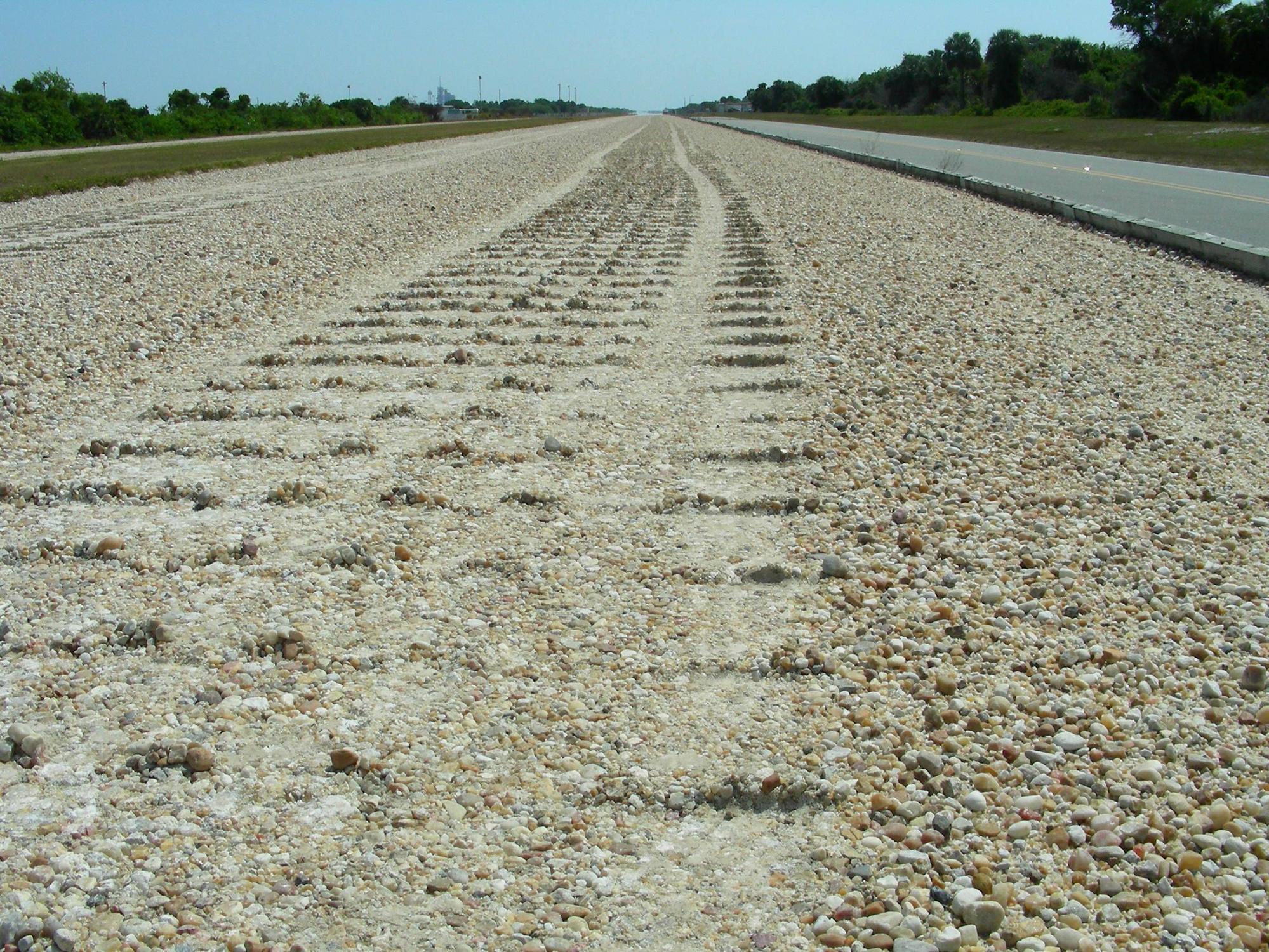In this video, at the 6:25 mark, you can see a truck drive in front of the crawler, spraying water on the gravel ahead of the treads. Why did they do this?
2 Answers
According to https://www.popularmechanics.com/space/rockets/a15777930/launching-to-space-at-a-crawl/
it is to reduce dust created as the crawler crushes some of the "Alabama River Rock".
Photo showing the crushed rock behind the crawler.
 (Source - Organic Marble)
(Source - Organic Marble)
Addendum:
According to the documentary 'When We Were Apollo', the gravel was not part of the original design, but added as a sacrificial bearing surface to stop damage that was occurring to the internal bearings. (Which raises the question: is it raked after use, and periodically replaced?)
-
37$\begingroup$ Is "reduce dust" ever not the reason to spray water on a gravel road? $\endgroup$– RonJohnCommented Jun 26, 2019 at 14:26
-
7$\begingroup$ @RonJohn, perhaps "prevent sparking" could be a reason, but in this case the specific type of rock was chosen to prevent sparking. Don't know where in the world sparking on a gravel road might happen. $\endgroup$ Commented Jun 26, 2019 at 17:49
-
4$\begingroup$ This is a good reminder that this crawler is insanely heavy. It is listed as weighing 6 million pounds (~2.7 million kgs) $\endgroup$– KevinCommented Jun 26, 2019 at 18:01
-
7$\begingroup$ @NeutronStar quartz is piezoelectric and produces electric sparks when quartz pebbles are rubbed/banged together. In some places quartz is a common component of gravel. $\endgroup$– SkylerCommented Jun 26, 2019 at 18:16
-
5$\begingroup$ 2,721 t (6,000,000 lb) is the curb weight of the crawler with all tanks filled to the top but no payload. The lifting capacity was increased from 5,400,000 to 8,200,000 kg (12,000,000 to 18,000,000 lb). So a total weight including payload may be up to 10,921,000 kg or 24,000,000 lb. Ground pressure will be much more 14.6 bar, I calculated 59 bar, that is four times the pressure of the crawler alone with no payload. $\endgroup$– UweCommented Jun 28, 2019 at 10:53
I can tell you why as I’ve been involved in the project for years. When the crawler rolls over that river rock it crushes it and the resulting crushing motion releases silica dust in every form (total, inhaleable, and most importantly, respirable). When the crawler rolls out, a team of crawler technicians are escorting it both on the ground and on the crawler. Studies have shown that these workers past and present have suffered respiratory issues as a result of this silica. As a result, the watering of the river rocks prior to the crawler crushing them, is an attempt to reduce this silica dust release.
-
$\begingroup$ Also, yes the rock is occasionally “raked” with a road grater. $\endgroup$ Commented Jul 17, 2020 at 2:37
-
-
1$\begingroup$ From Silicosis "Silicosis resulted in 46,000 deaths globally in 2013, down from 55,000 deaths in 1990." and "Because of work-exposure to silica dust, silicosis is an occupational hazard to construction, demolition, mining, sandblasting, quarry, tunneling, ceramics and foundry workers, as well as grinders, stone cutters, stone countertops, refractory brick workers, tombstone workers, workers in the oil and gas industry, pottery workers, fiberglass manufacturing, glass manufacturing, flint knappers and others." $\endgroup$– uhohCommented Jul 17, 2020 at 8:52